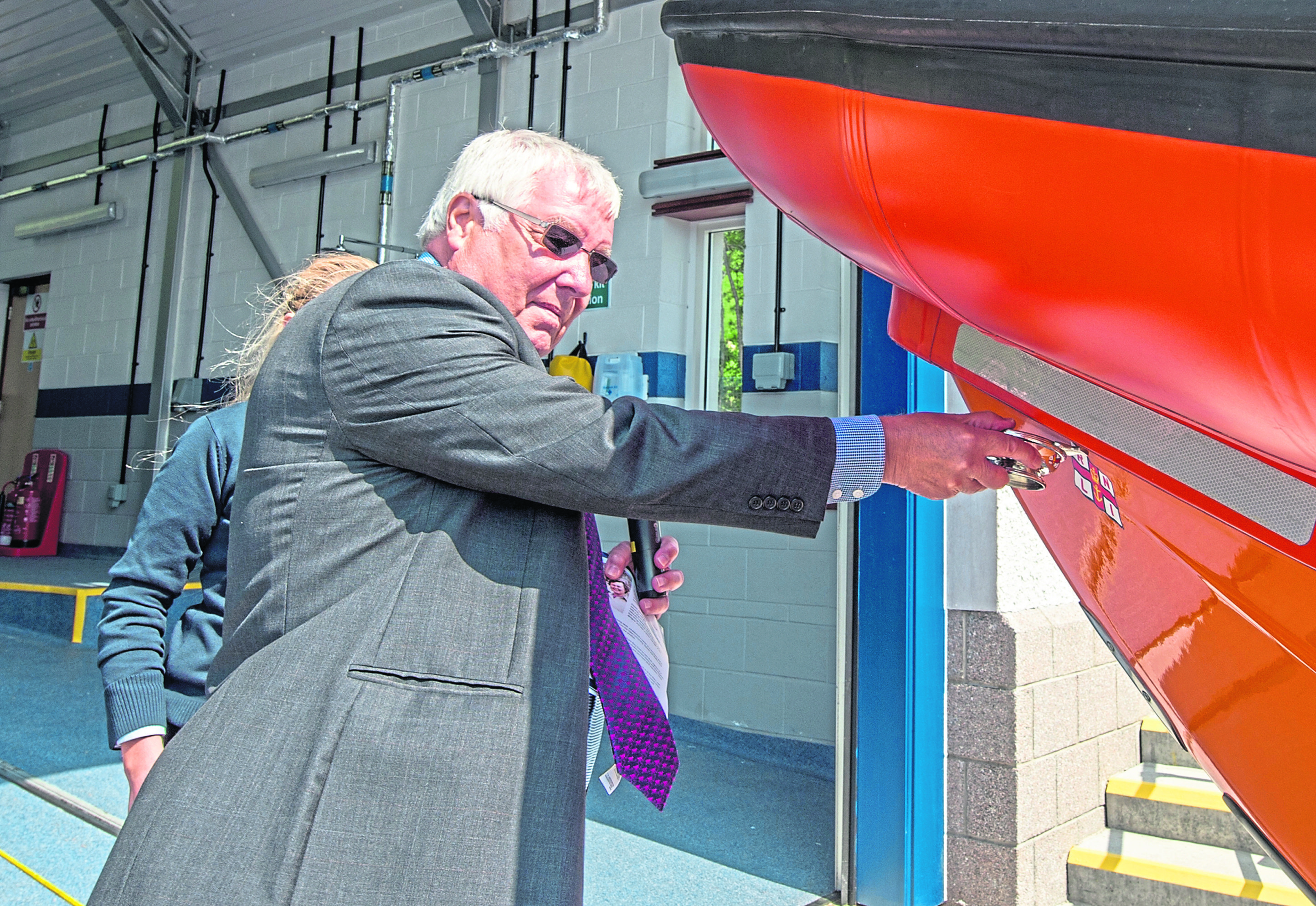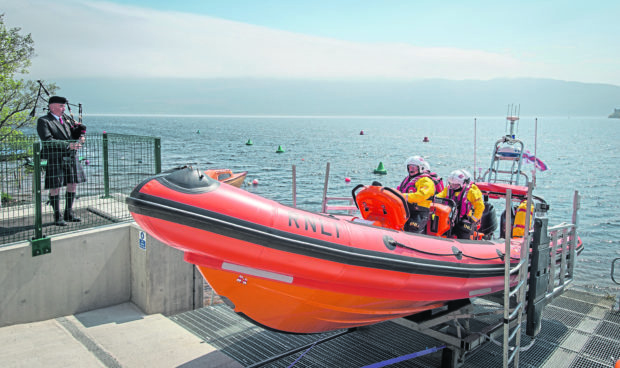A new £2.7 million lifeboat station on the shores of Loch Ness was opened at the weekend in a double celebration – as the new vessel serving the famous loch was also officially named.
The new lifeboat station and lifeboat, based at Drumnadrochit, became fully operational in March and have so far been called out seven times.
RNLI area lifesaving manager Stuart Gudgeon said: “We’re proud to be officially opening this superb facility and naming the new state-of-the-art lifeboat.

“The volunteers here at Loch Ness Lifeboat Station have had their busiest year to-date last year.”
The project to build the new station was largely funded by a generous bequest from Mrs Agnes Barr, whose family has a history of supporting the RNLI in Scotland.
Her brother was a keen sailor.
Following her marriage to Robert Barr in 1990 she became a regular contributor to the RNLI which notably covered refits at Fraserburgh and Montrose and pontoon works at Fraserburgh and Oban.
Mrs Barr’s single largest contribution was to Loch Ness Lifeboat Station, which she sadly did not live to see completed.
The B class Atlantic 85 inshore lifeboat Sheila & Dennis Tongue IV was built in-house by the RNLI and cost £214,000.
The lifeboat was paid for by Dennis Tongue who left provisions in his will to purchase four Atlantic class lifeboats, the Loch Ness lifeboat being the last of the four.
Dennis Tongue passed away in 2014 and lived in Exeter, Devon.
Dennis and Sheila Tongue had developed an interest in the RNLI whilst living in Devon during their retirement, not just for the charity’s role in saving lives at sea but for the value of a lifeboat station in a coastal community.
The decision to leave a substantial legacy to the RNLI was partly a ‘thank you’ for the happy years they spent in Exmouth and in recognition of the vital work of the RNLI.
Lifeboat operations manager Joanna Stebbings said: “We’re very grateful to Mrs Agnes Barr and to Dennis Tongue for their generous donations which will allow our crew to continue to go the aid of anyone who needs us on Loch Ness for many years to come.”
